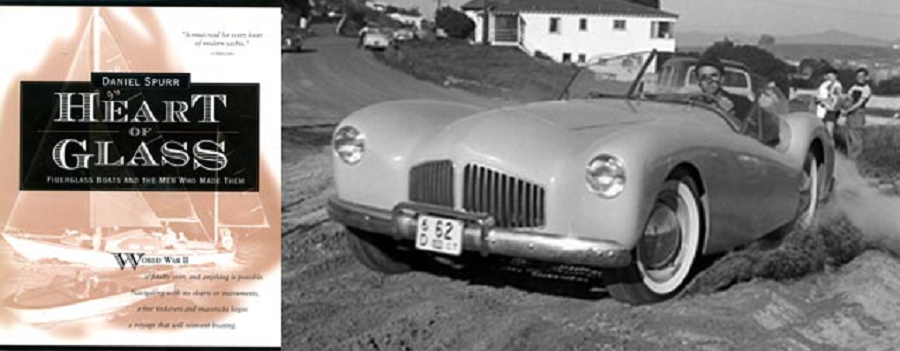
Note:
This is the third in a series of articles on Bill Tritt, his legacy, and his impact on the boating and sports car worlds. For additional articles in this series on Bill Tritt, click on the link below.
Click Here To Review The Articles Published On Bill Tritt From “Heart of Glass”
—————————-
Hi Gang…
It’s with a heavy heart that I share with each of you the news of the passing of Bill Tritt of Glasspar. He was 93 years old. Daniel Spurr, author of “Heart of Glass” which is a book about the history of “Fiberglass Boats and the Men Who Made Them” has given his permission to reproduce excerpts of his chapter that focused on Bill Tritt. I very much appreciate his allowing us to do so.
And now let’s review the next installment in a series of articles on the life and times of Bill Tritt.
Bill Tritt: The Dincat, Dinkitten, And Glasscat (Heart of Glass: Daniel Spurr, 2000)
Despite this sobering experience, Tritt was now hooked on plastics and he continued experimenting in his shop. His search for “something simpler and cheaper” led to the Dincat. The 12 foot, 6 inch Dincat was basically a rowing dinghy with a daggerboard, rudder, and cat rig. Tritt felt that there was a market for this traditional form in fiberglass and built it in his Costa Mesa plant. Later it was downsized to 8 feet, 6 inches and called the Dinkitten. It was followed by the Glasscat.
According to the Newport-Balboa Press, “Tritt found that improvements could be made on the original Dincat throughout re-designing and the popular sailing boat known as the G.C. or Glasscat is now being used by members of yacht clubs all over the United States.
The fast-sailing dinghy is constructed of 100 percent fiberglass, insuring years of trouble-free maintenance. Its hull is designed for speed, yet has a safety factor far beyond the norm in such a small boat. Stability and speed make it a safe boat for youngsters as well as adults. Definitely endorsed by the Cal-Tech Sailing Club, which recently bought a fleet of Glasscats, the trend in popularity of this boat is sweeping across the country.”
For spars, Tritt fabricated all-fiberglass masts – the first person to do so. And, in an experiment that predates by 40 years the development of composite spinnaker poles, he made for a large cruising yawl an all-fiberglass pole that substantially reduced the weight handled by the foredeck crew.
Before the end of the 1940’s, the popularity of these boats and spars enabled Tritt to incorporate. “Giddy with success,’ he said, “I got a business license requiring a company name. The spars on the two dinghies and now the triumph of the spinnaker pole suggested to me a name relating to both fiberglass and spars – obviously Glasspar.”
Tritt said that “Jerry Neiger, a friend of a friend, came to see me after his friend had described the Green Dolphin in glowing terms. After looking at the Glasspar products, he became enthusiastic about the potential and suggested an infusion of money and business experience by himself and his brother-in-law, Larry, with an equal equity ownership between them, Otto, and myself. Jerry and Larry put in $5000 each, and Otto and I got our shares for work and previous moneys contributed.”
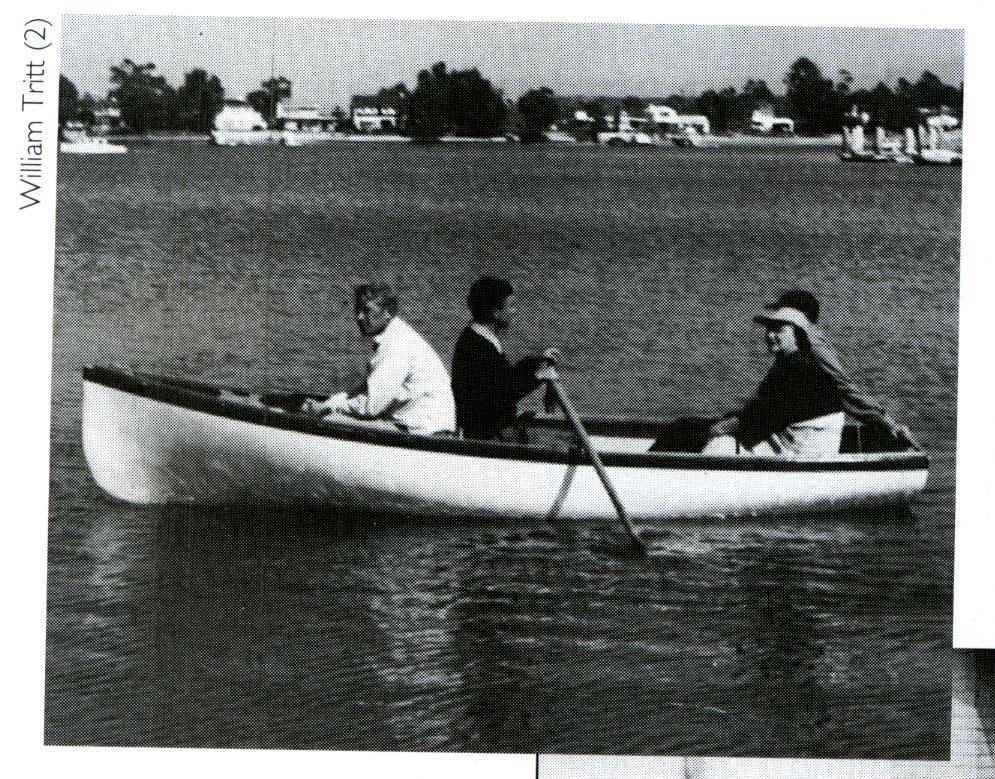
Another Early Fiberglass Rowing Boat By Tritt – No Doubt This is At Or Near His Facility Which Was Located In Costa Mesa on Industrial Way.
“Whether this was an equitable deal or not depends on one’s viewpoint: I personally was so overjoyed with the prospect of having working capital that nothing else mattered. The two dinghies were obviously weak moneymakers, and we agreed to get into small powerboats. This got off to a running start by buying the molds (female) for a 15-foot and a 14 foot runabout-fishing type.”
“Bob Lyons, a pioneer in fiberglass boats, had a contract with Sears for the 14-footer. The 15-foot boat was a more advanced design and Bob was building these for any and all. Both these boats were gel-coated and female-molded – a far cry from Wizard.”
“For whatever reasons, he elected to sell the molds and the Sears contract to us. We built for Sears from 1951 to 1954, to the best of my recollections. As we built a separate dealer organization, conflicts developed and we gave Sears up. We added to our line a 12-foot ‘cartopper’ of my design, and we continued to build the Dinkitten.”
Summary:
That’s the next installment of the chapter on Bill Tritt in Daniel Spurr’s book titled “Heart of Glass” and with his approval, we will reproduce parts of this same chapter over the next few weeks to honor Bill’s memory. Thanks again to Daniel Spurr for this permission. Those of you interested in purchasing new or used copies of this book on Amazon.com, click on the link below:
Heart of Glass Copies on Amazon.com
Hope you enjoyed the story, and until next time…
Glass on gang…
Geoff
———————
5/3/2011: Note From Bill Tritt’s Son Matt:
Hi Geoff,
Just got the latest installment on dad this morning, and wanted to help you with captioning for the two dinghy pictures.
The first one is a wing-mounted “drop boat” he made for Paul Mantz (very famous stunt pilot and WW2 ace) who mounted them under the wings of his PBY Flying Boat flying yachts for use as shore boats/tenders.
The second photo is of dad rowing a Dincat with Bill Hubater sitting ahead of him and, who appears to be, my grandmother “Joe” and another party in the stern seat. I have a copy of this one as well. It is out in Newport Harbor, but not in front of the Glasspar shop, since that was in Costa Mesa, not on the bay in Newport.
Matt Tritt
Click on the Images Below to View Larger Pictures
——————————————————————
- An Early Fiberglass Rowing Boat – By Bill Tritt.
- Another Early Fiberglass Rowing Boat By Tritt – No Doubt This is At Or Near His Facility Which Was Located In Costa Mesa on Industrial Way.
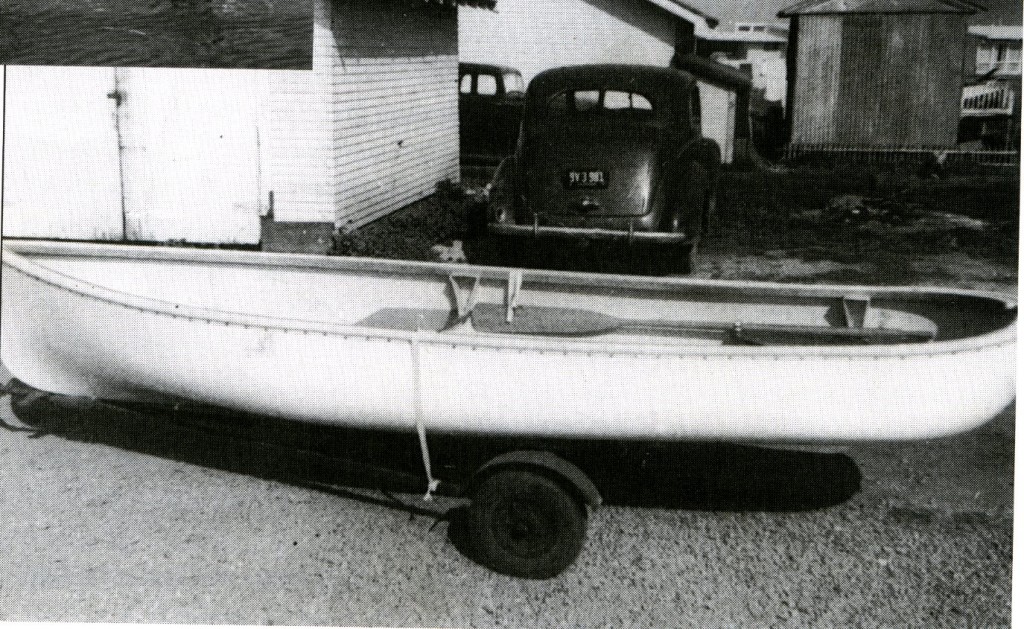
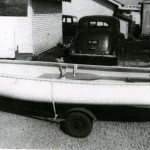
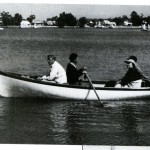
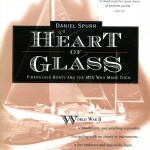
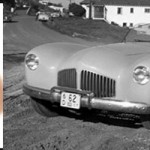
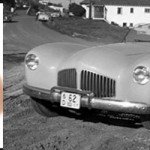

Good Day,
I just acquired a 1949 Din Cat and want to learn more about this boat , boat # MS17